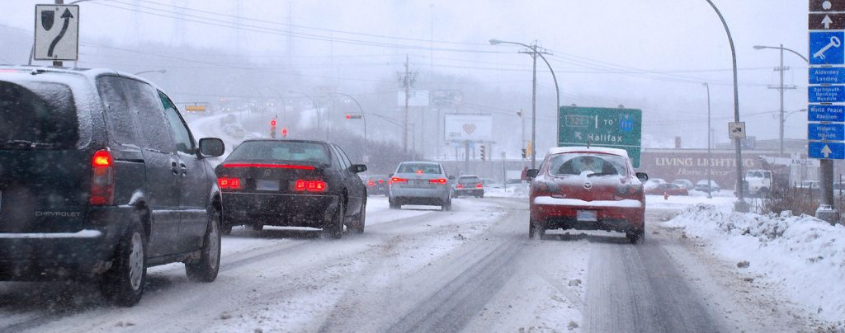Toronto Driving Guidelines - Road Safety Plans (RSP)
By Madinah on Jan 24, 2021Canada has been taking serious actions for maximizing road safety. Due to the increased number of road accidents, the government has planned strategies to offer protection to all road users, particularly pedestrians and cyclists.
Toronto’s Vision Zero Road Safety Plan (RSP)
Back in 2017, Canada decided to regulate a road safety plan for a longer-term that makes around 5 years (up to 2021). Toronto’s Vision Zero Road Safety Plan has been in action for 4 years. It is found highly helpful for maintaining traffic safety by reducing traffic-related hazards. Launched in 1997 by Sweden, Vision Zero is a well-known global road-traffic safety plan. In Toronto, the plan has helped identify rural or urban areas demanding road improvements, transitioning the outdated ‘road safety’ plans to advanced strategies to lessen the fatalities.
If you are thinking that safety plans will be targeting a specific type of population, you are mistaken. Toronto’s more than 60 safety measures cover 6 categories making roads secure, safer, and more effectively regulated for cyclists, pedestrians, children, and older adults. The remaining two include aggressive driving and road distractions.
Since Vision Zero has been applied, a number of improvements have been made specifically focused on speed limits, traffic rules for passing intersections, school safety zones, pavements, and road signals and signboards. The highlight of Toronto's long-term safety road plan is revolutionary geometric adjustments to positively impact the drivers’ behaviour.
2017-Vision Zero Road Safety Plan
In the starting, the significant modifications made in engineering and architecture departments for road safety initiative across the city are:
✓ All new red-light cameras with the perfect angle and clear visibility were installed at 76 new locations to make the drivers follow the traffic signals
✓ The pedestrian walk-time was increased especially for older adults at 50 highlighted signalized intersections
✓ Improved pavement markings with an increased number of sidewalks were the other major implementations
✓ The school's zone advancements were made particularly (up to 20 zones)
✓ More detailed road sign boards were implemented with understandable meaning
✓ Exclusive Seniors Safety Zones were introduced at 12 high-priority rural and urban areas
✓ Speed limits reductions in more than 32 roads, highways and freeways were executed
✓ More than 20 roadways received reachable pedestrian signals
✓ The design of the 13 roads was modified to make the necessary geometric improvements
✓ As per the surveys, top risk 14 paths received road safety audits
✓ Twelve additional pole-mounted speed display units spread all across the Toronto
Vision Zero 2.0 Since 2019
Further, changes made in Toronto’s Vision road safety plan in 2019 are explained further. Known as version 2.0, its guidelines, restrictions, and rules are still followed.
Speed Limit Reductions
Driving at a higher speed double folds the possibility of accidents so as per the new plan, the speed limit is reduced to 50 km/hr. When driving on any of Toronto's major arterial roadways or crossing intersections. Whereas on the roads that have the least chance of road-fatalities, you can drive at 100 km/hr. maximum. The safety of pedestrians is foremost. The locations with a heavy pedestrian crossing have a speed limit of 30 km/hr.
Mid-Block Crossings
Do you know how the pedestrians get hit by the car even though they are crossing the roads through the zebra crossing?
In cities, the crossings are far apart which takes more time to cross, increasing the chances of getting hit. Someone who is crossing a street mid-block right on a road halfway is usually in danger as any vehicle can approach from any direction. So, luckily, the mid-block crossings were taken under consideration and necessary geometric and engineering changes are made to facilitate the design for the walkers.
Increased Number Of Sidewalks
The most significant action taken is the “sidewalk installation policy”. In the crowded city zones, new sidewalks along with road renovation have been installed. Plus, it has helped to accommodate an individual with a disability. Sidewalks are important for pedestrian’s comfort, safety, and road accessibility, especially if they are older.
Automated Speed Enforcement
The best use of technology in RSP is the installation of automatic sensing cameras with a speed measurement device at all the high-risk intersections, highways, heavy traffic roads, and safety zones such as school zones. It is used to catch the drivers while over-speeding with visual proof.
Safety Zones Protocols
School Safety Zones
✓ New road signs having reflective surfaces
✓ Especially designed school zone sidewalks and curbs cutting to minimise the chances of accidents
✓ Mandatory “Watch your speed” driver feedback label
✓ Newly designed School crosswalks with increased walking time nearby school
✓ To support the active transportation of students, enhanced roadway markings are protracted equal to 150 m (away from school buildings)
✓ The deployment of the school crossing guards assisting kids to cross the road carefully
Pedestrian Safety Corridors
✓ The speed limits are revised and necessary reductions are made
✓ As per the walking speed and distance, notable adjustments are made regarding traffic signal timings
✓ Roads with a greater number of crosswalks
Senior Safety Zones
✓ Specially installed traffic road signboards for enhanced senior safety
✓ Heightened pavement markings for feasibility
✓ Prolonged road crossing walk times including signal traffic signs, as well
Speed Humps
More speed humps are installed all across the city to stop the vehicle drivers from over speeding. These are made in all the safety zones and the pathways receiving heavy traffic.
Accessible Pedestrian Signals (APS)
Ever heard about Audible Pedestrian Signals? These are now called Accessible Pedestrian Signals. They are installed by the roadsides for additional help to the road users who cannot see (either blind or visually impaired) and hear (deaf) or who neither see nor hear. They are encouraged to use these equipped signals when they are going to cross the road or have to pass through the intersection or junction.
Even having the right-of-way, with the help of these signals the safety is guaranteed as they will be communicating their intent to the driver.
Cycling Corridors
The backroads, alleys, or the pathways used as a cycling corridor are renovated with the enhancements in the pavement designs, extra traffic symbols, and green road markings highlighting the areas considered as high-risk collision locations.
The Leading Pedestrian Interval (LPI) or Pedestrian Head Start Signal
This initiative is focused on improving the safety of pedestrians by providing an approachable crosswalk signal so that when walkers start crossing the road before the green signal, the upcoming vehicles will get a warning. It is tailored for older pedestrians, as they might take more than a usual time to cross the street.
In some parts of Toronto, the equipment needs an advancement regarding audible and vibro-tactile features to support disable pedestrians.
Traffic Control ignals
As per the Vision Zero, Toronto’s traffic management and other official organizations are held accountable for installing, fixing and maintaining the traffic signals and road signs. The traffic signals are the most essential part of road safety ensuring the traffic flows smoother.
However, half of the population of Toronto still thinks that the 2.0 version is not meeting the expectations as it comes with a lot of limitations.


